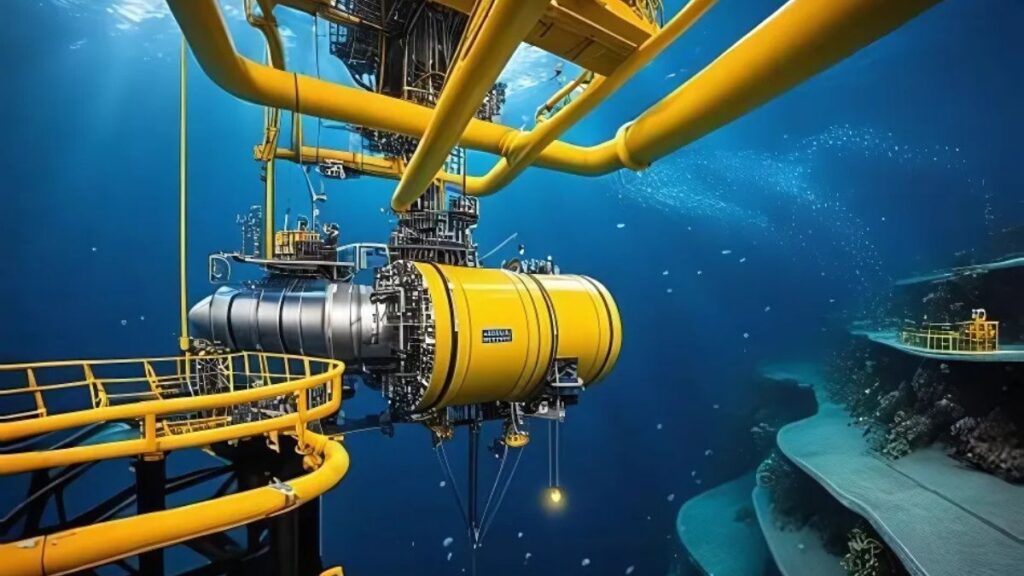Deep Offshore Technology: Innovations in Energy Exploration

New advances have greatly changed the way companies extract energy from the ocean floor. Improvements in technology mean that offshore operations are now safer, more efficient, and more sustainable than before. Deep offshore technology enables the harvesting of important natural resources from very deep waters that no one thought could be reached safely before. Through this blog, we’ll learn about deep offshore technology’s role in shaping future energy exploration, the tools and technologies behind its achievements, and how it is changing the offshore industry. Being familiar with deep offshore technology helps us see how it supports our renewable energies and environmental objectives.
What Makes Up Deep Offshore Technology?
It describes the modern ways, equipment, and technology employed to search for, extract, and look after natural resources found at great ocean depths. Because of these technologies, many industries are able to harvest energy stored at the bottom of the sea, often several thousand feet down. Deep offshore technology has advanced quickly in modern times, solving issues related to deepwater drilling, underwater equipment, and safety for the environment.
Because of subsea production systems, remotely operated vehicles (ROVs), and floating production storage and offloading (FPSO), the industry has improved its method of extracting oil and gas from below the ocean. Besides, such technologies are making it possible to introduce new environmentally friendly systems like offshore wind turbines and equipment in subsea areas.
Important Feature of Deep Offshore Technology
Subsea Production Technology
Deep offshore technology relies on subsea production systems to transfer and transport oil and gas from the sea floor into facilities located above water. They are made up of subsea trees, subsea manifolds, and subsea pipelines, which cooperate to help produce and send oil and gas efficiently.
Thanks to these advanced systems, energy from such extreme places is extracted in a way that keeps it easy and safe. Reducing the environmental damage of offshore drilling is made possible in part by keeping a smaller footprint on the ocean’s surface with subsea systems.
Floating Production Storage and Offloading is known as FPSO.
One important innovation for deep offshore technology is the use of floating production storage and offloading (FPSO) units. FPSOs remove, treat, and save oil and gas, which makes them important for exploration in deepwater fields.
The processing of hydrocarbons can be completed with these units even without extensive building on the seabed. Thanks to their movable nature, they are essential for carrying out offshore energy work. By using advanced monitoring and maintenance tools, FPSOs avoid many production interruptions and reduce potential problems during their operation.
Remotely Operated Vehicles (ROVs) and Autonomous Underwater Vehicles (AUVs)
Many tasks in the deep offshore industry now depend on ROVs and AUVs. Underwater vehicles are used to survey, service, and fix underwater equipment, so that pipelines and subsea wellheads stay well-maintained.
Because ROVs are handled from a boat above, operators can carry out video inspection, cutting, and welding jobs even at great depths. Being independent devices, AUVs are best suited for jobs like sea floor mapping and monitoring environmental changes at sea. Such tools make safety better, reduce how much it costs to run offshore operations, and increase how efficient they become.
HPHT Drilling
With HPHT drilling, resources have become available from reservoirs that remain closed to conventional technologies. Since water gets deeper and the temperature and pressure are higher, HPHT drilling uses machines made for these demanding conditions.
As a result, this technology helps companies reach new areas, making deepwater exploration much more possible. HPHT helps shape the advancement of subsea drilling and forms deeper offshore rigs.
What Subsea Pipelines Do in the Development of Deep Offshore Technology
Deep offshore technology is supported by the use of subsea pipelines. They are part of a system that takes oil, gas, and similar resources collected underwater to processing facilities high above them. To operate in the rough environment of the deep sea, these pipelines are tough enough to resist high pressure, corrosion, and ongoing sea movement.
Along with carrying liquids, submarine pipelines include digital systems that keep an eye on the condition of the pipeline in real time. With such an inspection, possible leaks or blockages can be found, so solutions can be put in place fast to prevent damage to the environment.
New developments in offshore renewable energy
Deep offshore technology is useful for more than just gathering fossil fuels. The technology is playing a part in harvesting offshore wind and other forms of renewable energy. The newest innovations for making energy offshore are floating wind turbines and systems that use energy from the seafloor.
They open up the option of putting wind farms in further reaches of the water, where using traditional, fixed turbines is out of reach. They should be put in places with higher wind rates, which helps them become much more efficient and generate more energy.
In addition, using SIoT technology allows real-time observation and tuning of offshore wind turbine systems. It allows renewable energy systems to function easily in both easy and difficult weather situations.
Offshore Automation and Digitalization
Deep offshore technology will evolve towards being more automated and digital. With innovations now available, such as digital twins in offshore work and robotic drilling systems, the industry is growing safer and more efficient.
Digital twins use up-to-date information to build virtual models of assets at sea, allowing operators to closely watch and predict what will happen. With this Deep Offshore Technology, predictive maintenance happens more quickly, less time is spent on equipment, and fewer workers are needed for manual work. Just as AI automation is used for mining, it improves drilling accuracy and cuts down on errors by people.
Environmental Monitoring in the Seas and Offshore Protection
As offshore work gets more complicated, there is a bigger focus on cutting the strain on the environment. Safe and responsible offshore activities are largely possible because of marine environmental monitoring technologies. Therefore, the data for water, marine living things, and air conditions are gathered and used to guarantee compliance with environmental rules.
Offshore safety is always being updated to ensure better protection of company equipment and personnel. Technical safety measures such as instant hazard alerts, quick emergency response support, and automated hazard management are present on offshore rigs and production units to prevent issues.
The Development of Deep Offshore Technology
With new developments appearing all the time, deep offshore technology is set to make impressive strides. Because of an increasing need for energy and the increased value of sustainability, the offshore industry will continue shifting.
When we combine underwater robots, predictive maintenance, and offshore renewable energy, offshore work can be done more efficiently and with less impact on nature. At the Deep Offshore Technology same time, advancing technology in materials, drilling, and robotics will keep offshore energy collection safe and environmentally friendly.

Conclusion is that Deep Offshore Technology:
Technological progress in deep water has greatly changed how we discover and retrieve resources from the ocean. Since subsea technologies, floating units, and automated equipment have advanced, the industry can meet the rising need for energy around the world. Employing advanced technologies and sustainable techniques will help the offshore industry keep providing energy and protect the environment. Going forward, innovation in deep offshore technology will guide the future of energy exploration in the deep sea.




